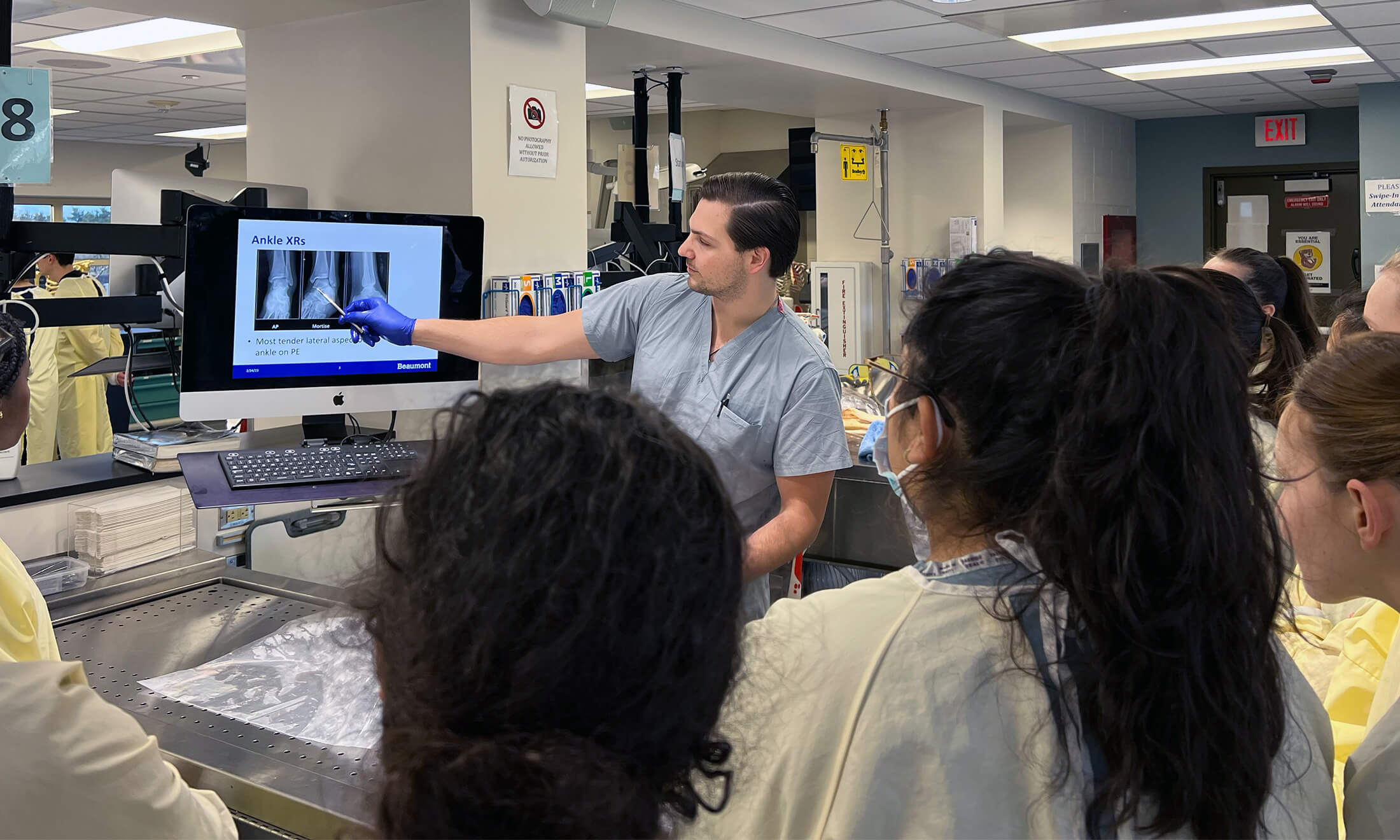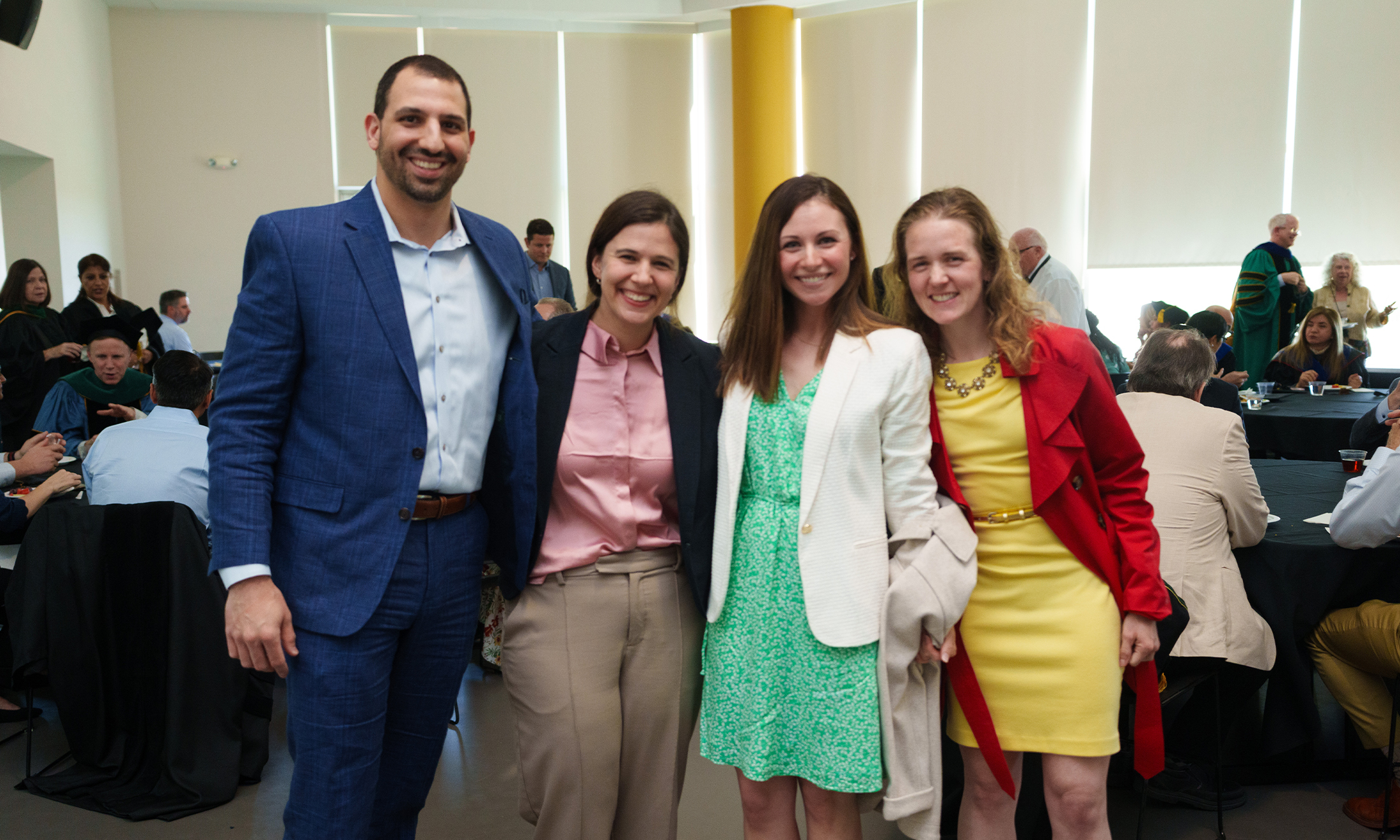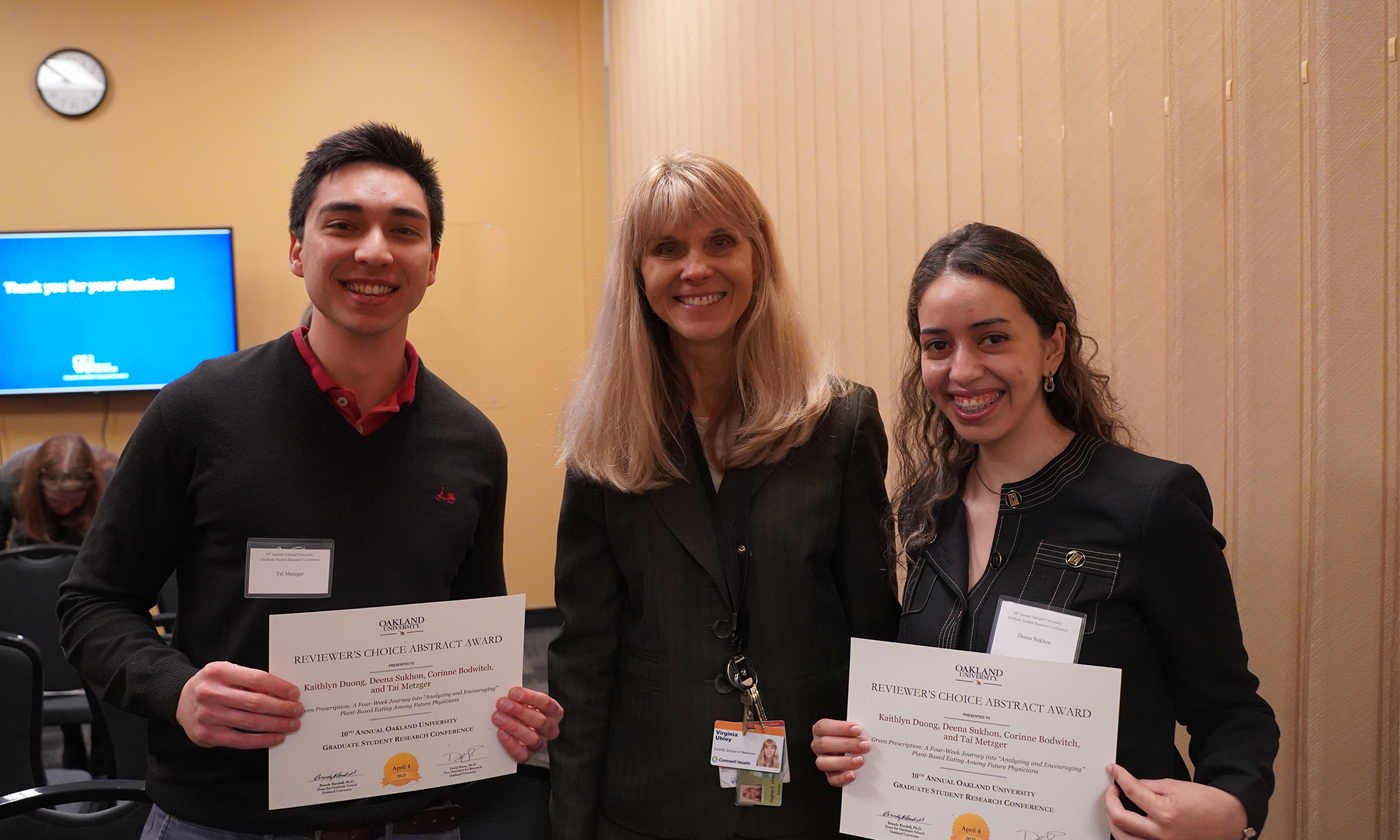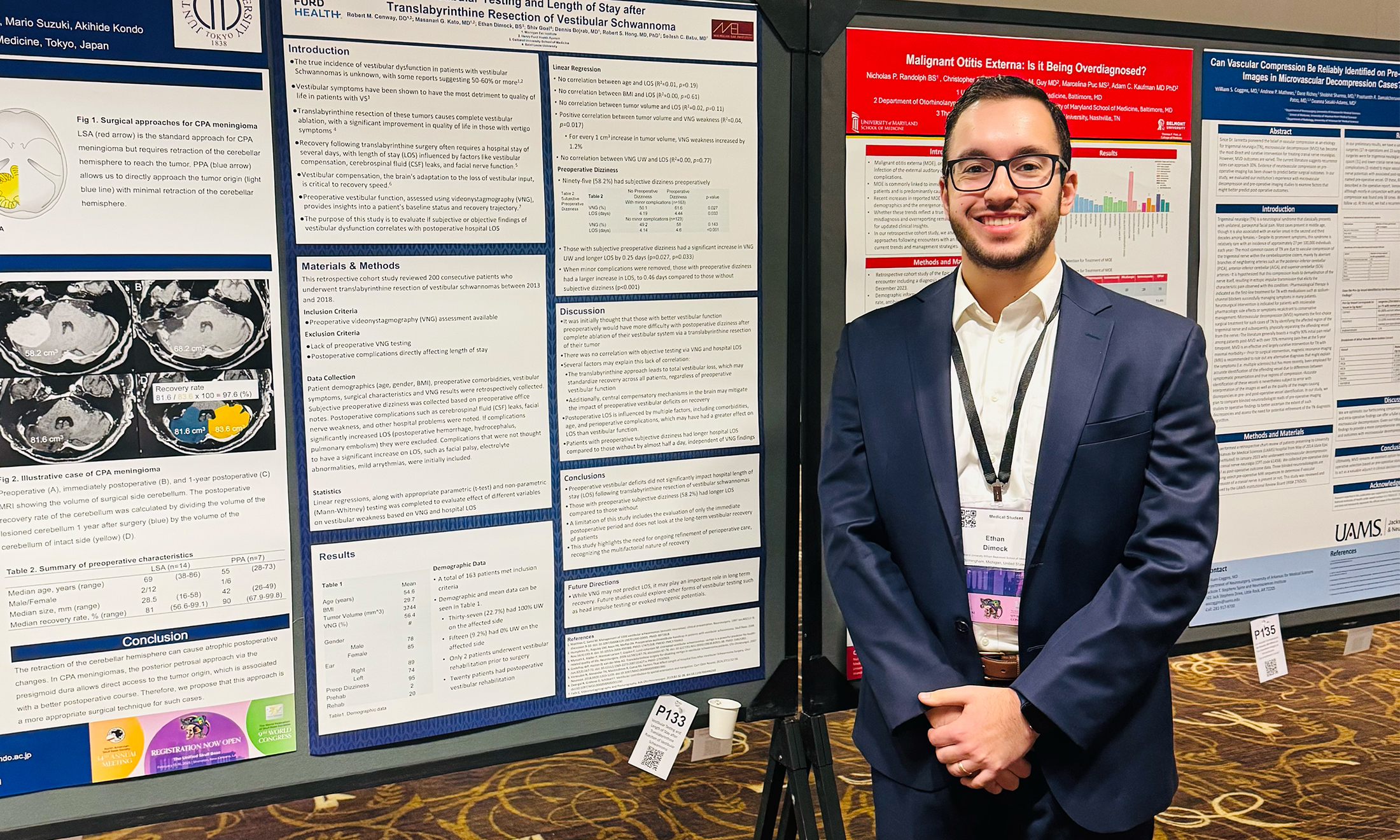Back to school
Residents and OUWB alumni return to teach in school’s anatomy lab
When Kevin Weisz, M.D., returned to teach an anatomy course at OUWB, he wanted medical students to take a bit more away than the lesson at hand.
Specifically, the OUWB Class of 2019 alumnus wanted to help the students see that it won’t be long before they will be doctors — and that it won’t be long before they, too, might return to the school and be involved in the medical education of future physicians.
In short, as a fourth-year resident Weisz wanted medical students to see themselves in him, and it was a big reason he jumped at the opportunity to return to the lab in a new capacity. He’s one of five alumni so far who have returned to teach in the lab.
“It’s really all about showing people that medical school seems like a very long road, but it really does go quickly,” says Weisz, an orthopaedic surgeon at Corewell Health. “They will make it, and there is light at the end of the tunnel.”
Malli Barremkala, M.D., associate professor, Department of Foundational Medical Studies, calls it a “great opportunity for OUWB alumni to come and give back to the community that they benefited from.”
“As a faculty member, it also provides for an enormous sense of pride in seeing our students performing so well,” he says. “Not only in treating patients, but also coming back and teaching our current students.”
“It’s also great motivation,” he adds. “Because students see their near peers who have graduated and gone on to great positions.”
‘Definitely not easy’
OUWB’s anatomy lab is located on the campus of Oakland University, on the third floor of Hannah Hall.
The state-of-the-art lab opened in 2013, and provides for teaching human medical gross anatomy, neuroanatomy, microbiology, immunology, pathology, physiology and more.
The lab also provides space for interdisciplinary education with medical and physical therapy students and is used to teach physiology to undergraduate biology students. Further, there is a separate room used for advanced dissection.
It has more than 30 down-draft, stainless-steel tables — each with a donor who has generously donated their body to medical education.
Barremkala explained how it generally works when alumni are called on to teach first- and second-year medical students in the lab.
First, course directors and teaching faculty look at schedules and identify teaching opportunities for clinical faculty.
Times are identified when residents are needed to help cover one of the six teaching stations within the lab.
“We work with attendings to figure out if a resident would be a good fit,” says Barremkala.
That’s when residents in orthopedic surgery like Weisz are called on to help.
In early 2023, he led a session on knee anatomy because he plans to specialize in hip and knee reconstruction.
“We try to tie in clinical situations and actual cases with what they’re seeing grossly with, not only the categoric specimen, but also with quick case presentations that we do,” he says.
“What the session is really trying to do is take a step back and show why everything you’re learning in the anatomy lab is important and how this can be used in your practice as a physician,” adds Weisz.
A sense of pride
Matthew Lipphardt, M.D., OUWB ’20, also returned to the OUWB Anatomy Lab to teach in early 2023.
He recalls OUWB alumni returning to teach when he was in medical school, and that he’s been excited to pay it forward ever since.
“It’s fun,” says Lipphardt. “It’s nice to go back and see the medical school again…see some of the instructors we had in the lab.”
Lipphardt says he always enjoys teaching, and that it reinforces his own knowledge base.
“Having residents in the lab is nice because students get more of the clinical side of things versus just the raw anatomy,” he says. “Students get the real applicable side of things, which I think is especially exciting for first- and second-year medical students who are always looking to the next step of training.”
“Plus, it helps them feel like they are one step closer to actually being in the hospital (as physicians),” he adds.
Barremkala says whenever the former OUWB students return, he always feels a sense of pride.
“As an OUWB faculty member, I’m always proud of our students,” he said. “Every time they come back to the lab, I still get goosebumps.”
More than that, he said, Barremkala sees what he calls the “enormous impact” of medical students being taught by residents who once were in their shoes.
“Anatomy definitely is not easy,” he says. “But it’s great motivation for current students when they see people who are like them and have gone through it before.”
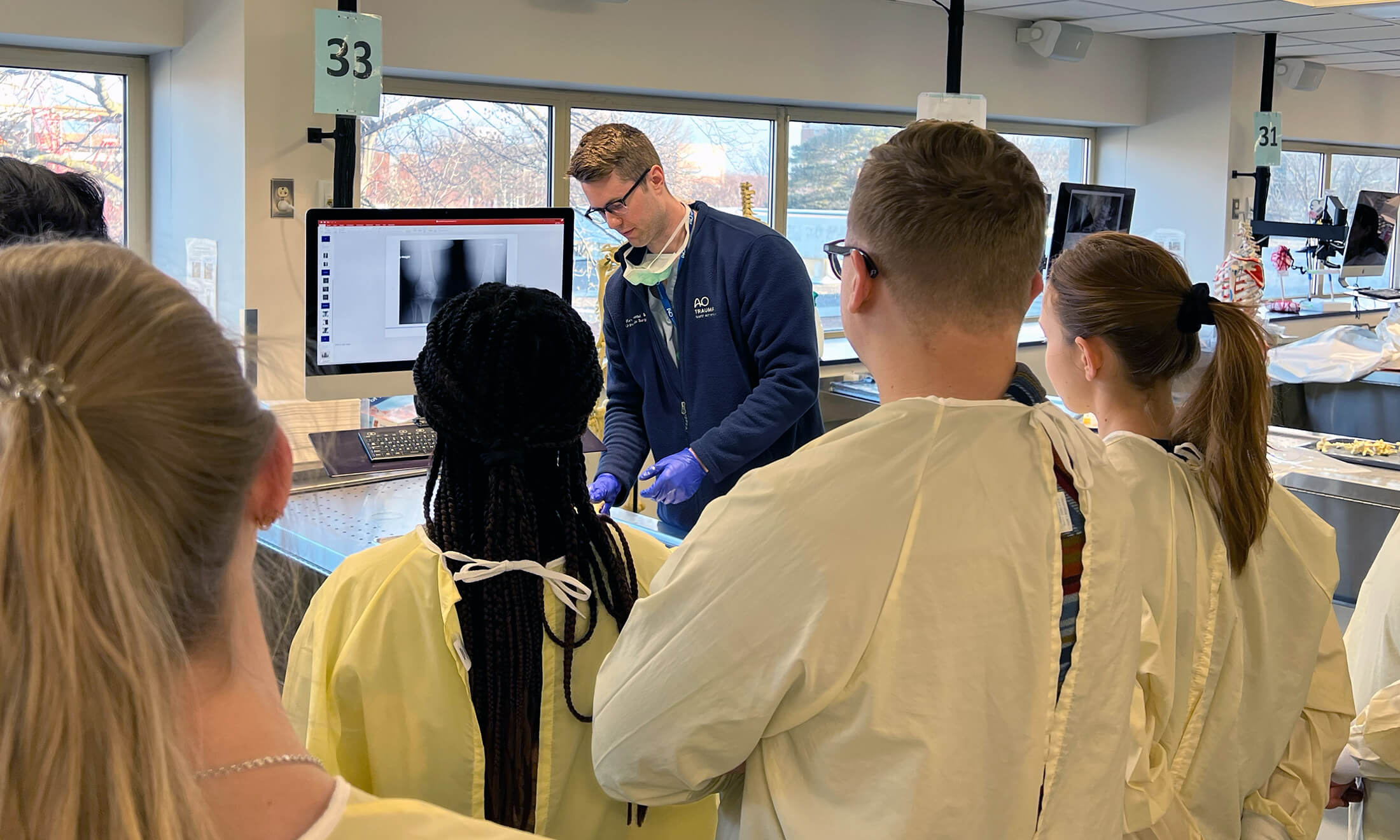
 February 01, 2024
February 01, 2024
 By Andrew Dietderich
By Andrew Dietderich